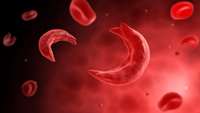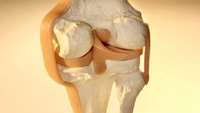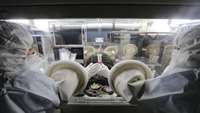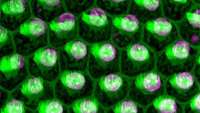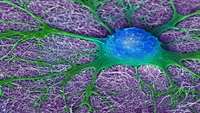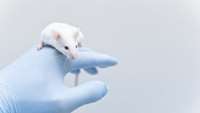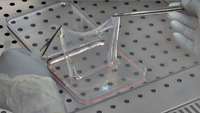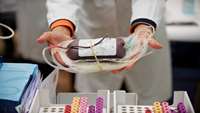Outcomes of Unrelated Donor Stem Cell Transplant with Post-Transplant Cyclophosphamide for Graft- Versus-Host Disease Prophylaxis in Patients with Severe Sickle Cell Disease.
Unrelated donor (URD) hematopoietic cell transplants (HCT) in children with sickle cell disease (SCD) is associated with a high incidence of rejection and graft versus host disease
Single-Dose Gene-Replacement Therapy for Spinal Muscular Atrophy
Spinal muscular atrophy type 1 (SMA1) is a progressive, monogenic motor neuron disease with an onset during infancy that results in failure to achieve motor milestones and in death or the need for mechanical ventilation by 2 years of age
Cell-laden composite suture threads for repairing damaged tendons
Tendons have limited regenerative capacity due to their low cellularity and hypovascular nature, which results in poor clinical outcomes of presently used therapies.
Transplantation of wild-type mouse hematopoietic stem and progenitor cells ameliorates deficits in a mouse model of Friedreich’s ataxia
Friedreich’s ataxia (FRDA) is an incurable autosomal recessive neurodegenerative disease caused by reduced expression of the mitochondrial protein frataxin due to an intronic GAA-repeat expansion in the FXN gene.
Japan faces new competition in the race for regenerative medicine
Masaya Nakamura can pinpoint the moment when he decided to dedicate his life to researching and treating spinal cord injuries.
Inner ear stem cells may someday restore hearing
Inner ear stem cells can be converted to auditory neurons that could reverse deafness, but the process can also make those cells divide too quickly, posing a cancer risk, according to a study led by Rutgers University-New Brunswick scientists.
Researchers develop a gel for growing large quantities of neural stem cells
In many ways, stem cells are the divas of the biological world. On the one hand, these natural shapeshifters can transform themselves into virtually any type of cell in the body. In that regard, they hold the promise of being able to cure ills ranging from spinal cord injuries to cancers.
Tiny Human Brain Organoids Implanted in Rodents
Minuscule blobs of human brain tissue have come a long way in the four years since scientists in Vienna discovered how to create them from stem cells.
Gene Therapy Creates Replacement Skin to Save a Dying Boy
Doctors in Europe used gene therapy to grow sheets of healthy skin that saved the life of a boy with a genetic disease that had destroyed most of his skin, the team reported on Wednesday in the journal Nature.
Futurism First Results of a Clinical Trial to Cure Aging Using Young Blood Just Came in
The results of a study investigating whether blood plasma taken from young people can reverse the effects of Alzheimer’s disease are in. Unfortunately, it seems that the technique doesn’t hold as much potential as many had hoped, yet the scientists behind the work are quick to note that the research is still in its nascent stages.


